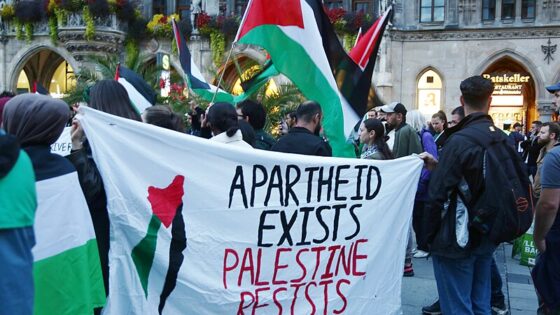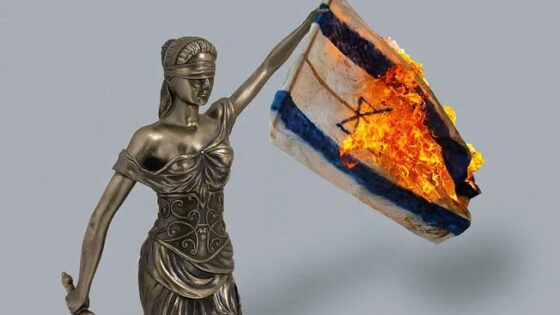What’s gone wrong on our college campuses and how can we fix it? This past week, Manhattan Institute scholar Heather Mac Donald, a knowledgeable supporter of America’s criminal justice system and thoughtful critic of the Black Lives Matter movement, was repeatedly shouted down by protesters at UCLA, then silenced and forced to escape with a police escort the next day, during what should have been her talk at Claremont McKenna College.
These incidents follow the February riot that forced the cancellation of a Milo Yiannopoulos talk at UC Berkeley, and the March shout-down at Middlebury College of conservative Charles Murray, followed by the violent attack that sent Murray’s liberal interlocutor, Professor Allison Stanger, to the hospital.
The immediate lesson of the UCLA shout-down and the Claremont shut-down is that widespread condemnation by all sides of the Berkeley and Middlebury incidents has not restored campus free speech. On the contrary, America’s colleges continue their descent into low-grade anarchy.
Why is that? The immediate explanation is that leftist college students are furious at the election of Donald Trump as president. Yet often-illiberal demonstrations swept over the nation’s campuses during the 2015–16 academic year, well before Trump became a factor. The crisis of free speech has also been aggravated by a rising tide of shout-downs and disruptions of pro-Israel speakers since 2014. Before that, I reported in 2013 on a few of the more egregious silencing incidents sparked by the campus fossil-fuel divestment movement, then in full swing. In fact, I began covering campus silencing incidents for NRO in 2001, when I wrote about angry UC Berkeley students storming the offices of the Daily Californian to destroy a run of papers containing a David Horowitz ad opposing reparations for slavery. Today’s problems are hardly new.
Back in 2001, as reported by ABC News, thefts of campus newspapers had increased by 600 percent over the previous decade and campus speeches by former Secretary of State Henry Kissinger, anti-preferences activist Ward Connerly, and Second Amendment supporter Charlton Heston were often disrupted or canceled. Here is a very partial excerpt from David Horowitz’s description of his reception at various campuses in the early 2000s: “I once had to terminate a talk prematurely despite the presence of thirty armed police and four bodyguards at Berkeley. I had to be protected by twelve armed police and a German Shepard at the University of Michigan. I was rushed by clearly deranged individuals and saved only by the intervention of a bodyguard, twice — at M.I.T. and Princeton.” (Sixteen years later, Horowitz has become the latest example of a campus free speech shut-down.)
A San Francisco Chronicle article from 2000 describes an incident at Berkeley in which 200 demonstrators broke through police barricades and blocked a talk by then-former Israeli prime minister Benjamin Netanyahu. The incident was publicly condemned in a column by Berkeley mayor Shirley Dean and condemned as well in a joint letter by several members of the original Berkeley Free Speech Movement. These interventions by prestigious voices on the left were fueled by “cumulative frustration over several years of leftist demonstrations, particularly at the UC campus, disrupting speeches of those they view as criminal in one form or another.” Targets of UC Berkeley disruptions stretching from the mid 1980s to the year 2000 included Secretary of State Madeleine Albright, Supreme Court Justice Sandra Day O’Connor, and former NATO commander General Wesley Clark.
The first in this series of UC Berkeley speaker disruptions of the post-1960s era seems to have been the 1983 shout-down down of Ronald Reagan’s United Nations ambassador, Jeane Kirkpatrick, by hecklers opposed to U.S. policy in El Salvador. Although her words were drowned out, Kirkpatrick went through the motions of reading her talk. Her follow-up Berkeley lecture was canceled, however. This incident, at a time when shout-downs were rare, sparked a national discussion and broad condemnation. Yet far from this condemnation preventing further disruptions, the virus quickly spread. Kirkpatrick was shouted down two weeks later at the University of Minnesota and her scheduled 1983 commencement address at Smith was canceled. The current era of campus shout-downs, shut-downs, and disinvitations had arrived. Yet the origins of this era lay still further back in time.
The campus disruptions of the 1960s and early 1970s set the pattern for all that was to follow from the mid 1980s onward. Most important for our purposes, Yale’s Woodward Report of 1974, the classic defense of campus free speech, identified a series of shout-downs and disinvitations stretching back eleven years as the pattern that Yale would need to break. What the Woodward Report called Yale’s “failures” began in 1963 when President Kingman Brewster, “in the interest of law and order” and in deference to New Haven’s black community, canceled a scheduled talk by segregationist Alabama governor George C. Wallace at the height of the Civil Rights struggle.
Keep in mind that the report’s chairman, Yale historian C. Vann Woodward, had advised Thurgood Marshall’s legal team as it argued for school desegregation in what became the Brown vs. Board of Education decision of 1954. And Woodward’s book, The Strange Case of Jim Crow, had been dubbed “the historical bible of the civil rights movement” by Martin Luther King Jr. himself. Yet this Civil Rights hero, along with other liberal faculty members at Yale, pressured President Brewster to defend the freedom of speakers such as George Wallace.
None of this is to deny that the problem of campus shout-downs and disinvitations is getting worse. Yet it’s important to keep in mind that today’s pattern is an intensification of a long-standing crisis that has had its ups and downs since the early Sixties, but has not fundamentally changed in form for well over five decades. What’s clear after 50-some years is that the academy has proven itself incapable of solving its free-speech problem on its own. Let’s see why.
We can think of the challenges to free-speech since the Sixties as washing over our campuses in four great waves. The first wave (“Young Radicals”) was made up of the illiberal and violent Sixties student radicals. Notwithstanding the views of the Free Speech Movement veterans who condemned the Berkeley Netanyahu shut-down of 2000, a great many of the Sixties radicals rejected classical-liberal conceptions of freedom in favor of a neo-Marxist analysis. In this view, free speech and constitutional democracy are tools used by the ruling class to suppress dissent and protect an oppressive society.
The second anti–free-speech wave (“Long March”) hit colleges in the early-to-mid 1980s, as the radicals left graduate school and took up junior faculty positions, bringing their suspicions of free speech with them. These faculty did away with required Western Civilization courses as well, helping to launch the academic “culture war” that began at Stanford in 1987. After allied leftist faculty and students succeeded in abolishing Stanford’s Western Civilization requirement in 1988, student demonstrators began demanding speech codes (partly in hopes of silencing students who had challenged them during the Western Civilization debate)
The third anti–free-speech wave (“Takeover”) began in the mid 1990s, as the older generation of professors began to retire. At this point, the younger and more radical generation of faculty members reached critical mass. That is, they had the numbers to control hiring. Not believing in the classical-liberal vision of a marketplace of ideas, these faculty used the tenure system, not to seek out and protect the finest scholarly representatives of diverse perspectives, but to solidify an intellectual monopoly of the Left. By the 2000s, the tenured radicals constituted a controlling majority in many social science and humanities departments, and stood as the most powerful plurality in the university as a whole.
The fourth anti–free-speech wave (“Transformed Generation”) consists of the late Millennial students who began demanding safe-spaces and trigger warnings around 2014, just as the number of university shout-downs and disinvitations began to spike. Free-speech advocate Gregg Lukianoff and social psychologist Jonathan Haidt attribute the new student sensitivities, in part, to parental coddling by the Baby Boomers. No doubt there is truth to this, but this college generation’s K–12 curriculum also differed dramatically from past standards.
Although Lynne Cheney, former National Endowment for the Humanities chairwoman under Presidents Reagan and George H. W. Bush, managed to convince the U.S. Senate to condemn the proposed new multiculturalist National History Standards of 1994, the left-leaning post-Sixties generation of K–12 teachers adopted them in practice anyway. The rest of the curriculum was also quickly remodeled along lines that stressed group conflict and America’s sins. The generation that brought us “micro-aggressions” and “white privilege” duly entered college 20 years later.
The key to solving the campus free-speech crisis lies in the decade-long interregnum between the radical Sixties and the kick-off of the campus culture wars in the mid 1980s. This was also a period of relative calm in the country as a whole.
The widely praised Woodward Report of 1974 marked the effective end of the Young Radicals phase (wave one), and ushered in the decade-long restoration of campus free speech. That restoration ended with the Jeane Kirkpatrick shout-down at Berkeley in 1983, which initiated the second wave of free-speech crisis.
What distinguished the Woodward Report of 1974 from Berkeley’s response to the Kirkpatrick shout-down of 1983 was the issue of discipline. The Woodward Report not only eloquently upheld the principle of free speech, it insisted that students who shouted down visiting speakers must be disciplined. The Woodward Report also established a sanctions policy, and a system for warning disruptive students of potential disciplinary consequences. This approach carried the day at Yale and elsewhere during the post-Sixties restoration of free speech. In effect, the Woodward Report and its positive national reception helped return the credible threat of discipline for speaker shout-downs that had been abandoned by craven administrators during the 1960s.
A decade after the Woodward Report, things changed. While the Berkeley faculty as a whole condemned the students who shouted down Jeane Kirkpatrick in 1983, a faculty resolution to have Kirkpatrick’s hecklers punished was defeated. This was likely a concession to the many junior faculty who openly defended Kirkpatrick’s disruptors on the grounds that “oppressors” have no free-speech rights. Although many observers felt that disciplinary action against Kirkpatrick’s hecklers had to be taken, the UC Board of Regents also declined to follow up on a demand for discipline initiated by Regents’ chairman Glenn Campbell. Meanwhile, UC Berkeley chancellor Ira Heyman indicated that no disciplinary action would be taken.
With more leftist faculty streaming in over succeeding years, those who favored discipline for disruptors grew less powerful. The days when even (or especially) liberal Civil Rights heroes understood the need to grant free speech to segregationists were over. The policy of disciplinary sanctions for shout-downs instituted to national praise by Yale in 1974, definitively went by the boards at Berkeley in 1983. Speaker disruptions then slowly grew in frequency and force at Berkeley and beyond. So, the refusal to discipline the students who shouted down Kirkpatrick ultimately helped lock today’s quasi-anarchic anti-speech system into place.
The thuggishness and violence of the Sixties demonstrations at their height exceeded what we see today. Yet today’s chronic, pervasive, and steadily growing vice-grip of campus orthodoxy, punctuated and enforced by occasional shout-downs and meeting takeovers, is in its way more dangerous.
There are plenty of indications that campus free speech is more besieged nowadays than it’s been in decades. Trigger warnings, safe spaces, and microaggressions signal a cultural sea-change. Anti-Israel shout-downs and disruptions have multiplied dramatically. These are no longer occasional embarrassing episodes but the fruit of a deliberate strategy devised by influential sectors of the campus left. FIRE (the Foundation for Individual Rights in Education), which keeps an index of disinvitations and shout-downs, says the overall rate of all such incidents is increasing.
Yet statistics tell only part of the story. We can’t assume a constant rate of speakers attempting to counter campus orthodoxies. Top comedians and an unknowable number of conservative speakers now avoid college campuses. At some point, a decreasing rate of shout-downs may actually indicate that free speech, along with resistance to campus orthodoxies, has been successfully crushed. And in a world of social media and the 24-hour news cycle, a few well-publicized shout-downs may suffice to chill speech and encourage violent demonstrators across the entire country. Finally, in contrast to the Sixties, today’s illiberal demonstrators, disruptive and ornery though they may seem, may actually be allied with significant sections of the faculty and administration (as KC Johnson has cogently argued).
So there are important reasons to believe that today’s free-speech crisis is locked-in and unchangeable in the absence of outside intervention. The alliance of radical students with dominant sections of the faculty (precisely those faculty members who reject classical liberalism) means that few C. Vann Woodwards remain to pressure administrators into defending free speech. Meanwhile, the ideologically based “studies” programs (various ethnic studies, women’s studies, and environmental studies majors) have grown to challenge the conventional academic departments in size and influence. This creates a large and permanent faculty and student constituency schooled in suspicion of classic liberalism.
Ultimately, the public has granted the academy certain rights and privileges — special financial and policy protections (especially tenure) — on the understanding that institutions of higher education will pursue truth under conditions of free inquiry and fairness to all points of view. There is a kind of implicit bargain or social contract here, and the academy has so consistently and persistently violated its side of the bargain that public action is now necessary.
In particular, the tenure system, designed to ensure freedom of speech and secure the marketplace of ideas, has been abused to create an illiberal intellectual monopoly. And precisely because of this monopolistic abuse of the unique privilege of academic tenure, along with the unresolved, decades-long crisis of campus free speech, the traditional policy presumption in favor of local control can no longer be sustained in this sector.
That is why state and federal legislators cannot look the other way but must act to restore our most basic liberties to the academy. And while legislation eliminating restrictive speech codes and so-called free-speech zones is very much in order, the underlying problem will not be solved until administrators are pressed to restore discipline for speaker shout-downs. The administrative refusal to discipline disruptors, which took off in the Sixties and resumed with the Kirkpatrick incident in 1983, must be reversed. Only a return to the policies and ethos of the Woodward Report offers hope.
There are several state-level campus free-speech bills on offer, but only the model legislation proposed in the Goldwater Report systematically addresses the problem of discipline for campus shout-downs. I have also offered a plan to tie federal aid to higher education to a restoration of discipline for speaker shout-downs, among other things.
The tattered campus climate of free speech ultimately rests on deeper cultural shifts that must be addressed by educators over the long-term. Yet legislative action to protect campus free speech could serve as the shock that initiates cultural change.
Short of legislative steps to restore discipline for disruption, even bipartisan condemnation of campus shout-downs will fail, as it has failed repeatedly in the past. The ranks of authentically liberal faculty members are far too thinned to do what Woodward and his colleagues did in 1974. Without an intervention by the public through its elected representatives, the structure of the anti-free-speech university is locked-in for the foreseeable future.
After 54 years, we are indeed at an inflection point. Act now, or campus free speech will be lost for a lifetime.
Stanley Kurtz is a senior fellow at the Ethics and Public Policy Center.




